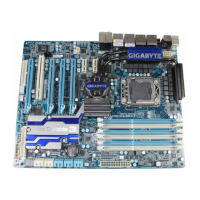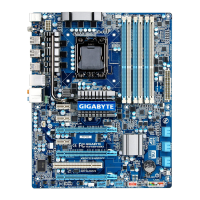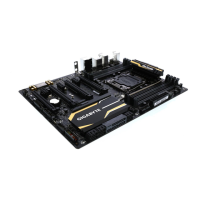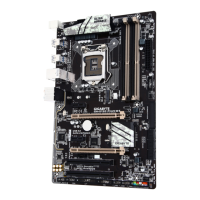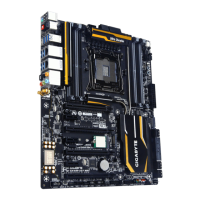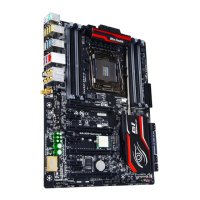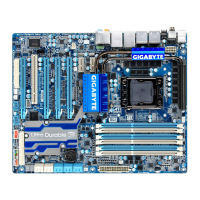
Do you have a question about the Gigabyte GA-X58A-UD5 and is the answer not in the manual?
| ECC | No |
|---|---|
| Non-ECC | Yes |
| Memory voltage | 1.5 V |
| Number of memory slots | 6 |
| Maximum internal memory | 24 GB |
| Processor socket | Socket B (LGA 1366) |
| Processor manufacturer | Intel |
| USB 2.0 connectors | 2 |
| Number of SATA connectors | 10 |
| Controller interface type | SATA |
| USB 2.0 ports quantity | USB 2.0 ports have a data transmission speed of 480 Mbps, and are backwards compatible with USB 1.1 ports. You can connect all kinds of peripheral devices to them. |
| VGA (D-Sub) ports quantity | 0 |
| Audio output channels | 5.1 channels |
| Motherboard form factor | ATX |
| Compatible operating systems | Windows 7/Vista/XP |
| PCI Express x16 slots | 4 |
| Bundled software | Norton Internet Security |
| Networking features | 2 x 10/100/1000 Mbit/s |
| ACPI version | 1.0 |
| Depth | 244 mm |
|---|---|
| Width | 305 mm |
Essential safety and handling guidelines before installing hardware components.
Detailed technical specifications of the motherboard and its features.
Step-by-step guide for installing the central processing unit and its cooling solution.
Instructions for installing RAM modules into the motherboard slots.
Procedures for installing add-on cards into PCI Express or PCI slots.
Guide for configuring multi-GPU setups for enhanced graphics performance.
Identification and description of ports on the motherboard's rear I/O panel.
Explanation of the motherboard's diagnostic LEDs and onboard switches.
Identification and layout of internal headers and connectors on the motherboard.
Overview of the initial screens displayed during system boot.
Description of the primary BIOS setup interface and navigation keys.
Options for overclocking, system clocks, frequencies, and voltages.
Settings for system date, time, IDE/SATA devices, and boot options.
Configuration for boot order, security, and system performance features.
Enabling/disabling onboard devices like SATA, USB, LAN, and Audio.
Settings for ACPI sleep states and power-on options.
Monitoring of system voltages, temperatures, and fan speeds.
Option to load stable, minimal-performance BIOS default settings.
Option to load performance-optimized BIOS default settings.
Functionality to set BIOS access passwords for security.
Procedure to save BIOS changes and exit the setup utility.
Procedure to discard BIOS changes and exit the setup utility.
Steps to install essential motherboard chipset drivers for system functionality.
Description and installation of bundled GIGABYTE utilities and software.
Access to application guides and motherboard manuals for further reference.
Information on how to contact GIGABYTE support worldwide.
Overview of the system's basic information, including BIOS version.
Link to GIGABYTE's website for downloading the latest BIOS, drivers, and applications.
Information on newly developed GIGABYTE utilities for user installation.
Utility for quick system data compression, backup, and restoration.
Explanation of GIGABYTE's Q-Flash and @BIOS tools for updating the system BIOS.
Software for fine-tuning system settings, overclocking, and monitoring.
Technology for optimizing power savings through hardware and software.
Tool for easy and convenient data sharing between networked computers.
A suite of six innovative utilities for system management and performance enhancement.
Feature to enable system power savings via Bluetooth cell phone connectivity.
Utility for quickly configuring RAID-ready systems and enhancing drive performance.
Functionality to combine dual LAN connections for increased bandwidth and fault tolerance.
Comprehensive guide to installing and configuring SATA drives and RAID arrays.
Instructions for setting up audio jacks for speaker and microphone connections.
Frequently asked questions and procedures to resolve common system startup issues.
Reference table for hexadecimal POST codes and their meanings.
Information on environmental compliance, RoHS, and WEEE directives.
